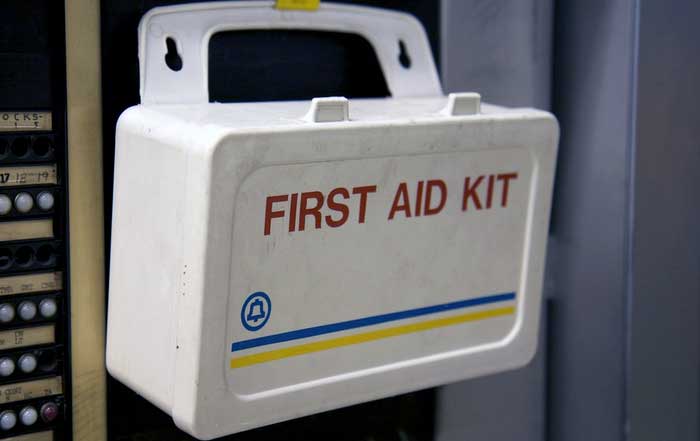The rise of remote work has been a transformative force, reshaping industries and redefining professional norms across the globe. One area experiencing a profound shift is corporate travel, a cornerstone of business operations for decades. As organizations increasingly adopt flexible work models, the dynamics of business travel are evolving, creating ripple effects across multiple sectors, including hospitality, aviation, and technology. This shift not only alters the frequency and nature of corporate travel but also prompts businesses to reimagine the very purpose of such journeys in a digitally connected world.
Corporate travel has long been a symbol of business growth, enabling professionals to attend conferences, close deals, and build relationships face-to-face. However, the pivot toward virtual communication tools and hybrid work environments has questioned the necessity and efficiency of frequent travel. As companies prioritize cost savings, environmental sustainability, and employee well-being, the traditional paradigms of corporate travel are being reexamined.
The Decline in Traditional Business Travel
Cost Efficiency and Budget Reallocation
One of the most immediate impacts of remote work on corporate travel is the reduction in travel budgets. Organizations have discovered that many tasks previously requiring in-person meetings can be effectively managed through video conferencing platforms like Zoom and Microsoft Teams. These tools not only save on travel expenses but also eliminate time spent in transit, allowing employees to focus on productive work. Consequently, companies are reallocating funds to areas like employee development, digital transformation, and customer experience enhancement.
Changing Priorities for Travel
While cost savings are a key driver, the shift in priorities goes beyond financial considerations. The emphasis is now on purposeful travel—trips that offer significant value and cannot be replicated virtually. For instance, strategic meetings, complex negotiations, and client relationship-building are still viewed as valuable reasons for travel. However, routine check-ins and internal team meetings have largely transitioned to virtual platforms, reducing the overall volume of business travel.
Reduced Travel Frequency
Remote work has also contributed to a cultural shift where employees and employers alike view travel as less essential. In many cases, the default assumption of needing to meet in person has been replaced with the question, "Can this be done remotely?" This mindset is particularly prevalent in industries that have successfully embraced remote work, such as technology, finance, and consulting.
The Evolution of Corporate Travel Policies
Flexibility and Employee-Centric Policies
With remote work granting employees greater autonomy, corporate travel policies are evolving to reflect this shift. Companies are increasingly offering flexible travel arrangements, allowing employees to combine work trips with personal time or choose travel schedules that align with their preferences. This approach not only improves employee satisfaction but also acknowledges the growing emphasis on work-life balance.
Focus on Sustainability
Sustainability has become a crucial consideration in corporate travel policies. As organizations commit to reducing their carbon footprints, there is growing scrutiny of travel-related emissions. Companies are implementing measures such as booking direct flights to reduce fuel consumption, encouraging the use of public transportation, and leveraging virtual meetings as alternatives to in-person events. Tools like Concur now provide carbon-tracking features, enabling organizations to measure and manage the environmental impact of their travel activities.
Compliance with Health and Safety Protocols
Health and safety considerations have also become integral to corporate travel planning. Organizations are prioritizing destinations and accommodations that adhere to stringent health standards, ensuring the safety of their employees. This focus has led to a preference for trusted hotel chains and airlines with transparent safety protocols.
Technological Advancements Shaping the Future of Business Travel
Enhanced Virtual Collaboration Tools
The proliferation of virtual collaboration tools has not only reduced the need for travel but also enhanced its efficiency when necessary. Innovations in video conferencing, augmented reality, and virtual reality are enabling businesses to replicate the benefits of face-to-face interactions remotely. These technologies continue to improve, offering increasingly immersive and interactive experiences.
AI-Driven Travel Management
Artificial intelligence is playing a pivotal role in modernizing corporate travel management. AI-powered platforms are streamlining processes such as itinerary planning, expense reporting, and risk assessment. Tools like AI chatbots provide real-time support for travelers, addressing issues ranging from flight cancellations to last-minute hotel bookings.
The Role of Data Analytics
Data analytics is enabling organizations to make more informed decisions regarding corporate travel. By analyzing patterns in travel spending, employee preferences, and trip outcomes, companies can optimize their travel policies for both cost efficiency and employee satisfaction. Predictive analytics also allows for better forecasting of travel needs, ensuring that resources are allocated effectively.
Industry-Specific Impacts of Remote Work on Travel
Consulting and Professional Services
Consulting firms, which traditionally rely on extensive travel to serve clients, are reimagining their operating models. Many firms are adopting hybrid approaches, where consultants travel only for high-value engagements while leveraging virtual tools for routine interactions. This shift not only reduces costs but also addresses concerns about employee burnout and work-life balance.
Technology Sector
The technology sector, already at the forefront of remote work adoption, has significantly reduced its reliance on business travel. Virtual product launches, online conferences, and digital training sessions have become the norm. Tech companies are also leveraging their own tools to demonstrate the efficacy of remote collaboration, setting an example for other industries.
Financial Services
In the financial services industry, where relationship-building is crucial, corporate travel remains relevant but more targeted. Bankers and investment professionals now prioritize trips for major deals or client meetings that require a personal touch, while routine updates and portfolio reviews are conducted virtually.
Corporate Travel Decision Tree
Challenges in Adapting to Reduced Corporate Travel
Maintaining Interpersonal Connections
One of the challenges associated with reduced corporate travel is the potential loss of interpersonal connections. Face-to-face interactions often foster trust and camaraderie, which are difficult to replicate virtually. Organizations must find creative ways to build and maintain these relationships in a remote-first world.
Ensuring Equity Among Employees
The shift toward virtual interactions raises questions of equity, particularly for employees who thrive in in-person settings or lack access to robust digital infrastructure. Companies must ensure that all employees have equal opportunities to engage, whether through travel or virtual platforms.
Balancing Cost Savings with Strategic Goals
While reducing travel can lead to significant cost savings, organizations must strike a balance between financial efficiency and achieving strategic objectives. Some high-stakes interactions simply cannot be replaced by virtual meetings, necessitating careful evaluation of travel decisions.
The Future of Corporate Travel
Hybrid Models of Engagement
The future of corporate travel will likely involve hybrid models that combine in-person and virtual interactions. Companies will need to develop strategies that leverage the strengths of both approaches, ensuring that travel is purposeful and impactful.
Integration of Leisure and Business Travel
The concept of "bleisure" travel, where employees combine business trips with personal vacations, is expected to gain popularity. Organizations may embrace this trend as a way to enhance employee satisfaction and make travel more appealing.
Reimagined Corporate Events
Corporate events such as conferences and trade shows are being reimagined to accommodate both in-person and virtual attendees. This hybrid approach not only increases accessibility but also reduces the environmental impact of large-scale gatherings.
Corporate Travel Conclusion
The impact of remote work on corporate travel is both profound and multifaceted. As organizations navigate this evolving landscape, they must balance the need for cost efficiency, employee well-being, and strategic objectives. The adoption of flexible policies, sustainable practices, and advanced technologies will be key to shaping the future of business travel. While the traditional norms of corporate travel may no longer be as relevant, its role in fostering meaningful connections and driving business growth remains indispensable.










